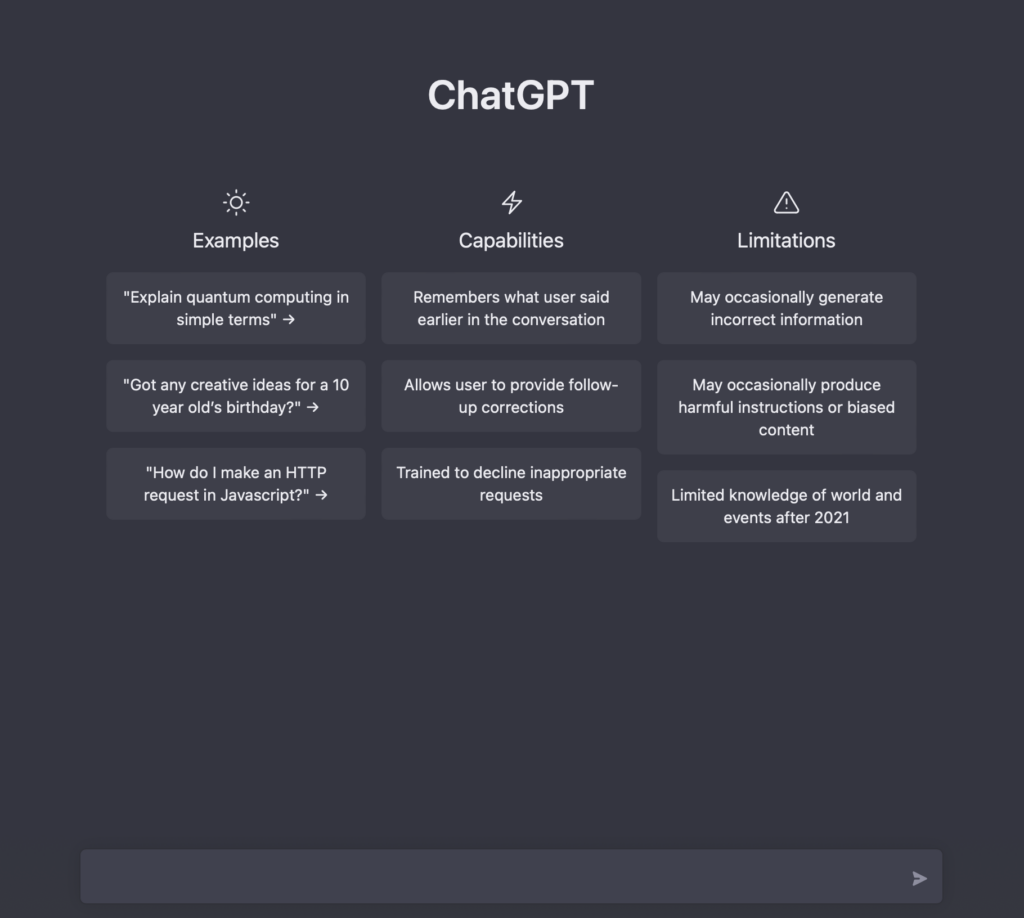ChatGPT: The Future of Language Generation

In recent years, there has been a growing interest in natural language processing and generation, and one of the most promising models in this field is ChatGPT. Developed by OpenAI, ChatGPT is a large language model that has been trained on a massive amount of text data and can generate human-like text with minimal input. In this blog post, we will take a closer look at ChatGPT and its capabilities.
What is ChatGPT?
ChatGPT is a transformer-based language model that has been trained on a massive amount of text data. It is based on the GPT (Generative Pre-trained Transformer) architecture, which has been shown to be highly effective for language generation tasks. ChatGPT has been fine-tuned for several language generation tasks such as language translation, question answering, and text summarization. It can also be used for text completion, conversation, and other language generation tasks.
How does ChatGPT work?
ChatGPT works by using a process called unsupervised pre-training, where the model is trained on a large dataset of text data without any explicit labels or tasks. The model learns to understand the structure and patterns of the text data, which enables it to generate text that is similar to the input data. The model can be fine-tuned for specific language generation tasks by training it on a smaller dataset of labeled data.
What are the capabilities of ChatGPT?
ChatGPT is capable of a wide range of language generation tasks. It can generate text that is similar to the input data, complete text snippets, and answer questions based on the input data. It can also be used for text summarization, language translation, and conversation. One of the most impressive capabilities of ChatGPT is its ability to generate human-like text with minimal input. This makes it a valuable tool for a wide range of applications, such as chatbots, virtual assistants, and automated content generation.
Here are some key features of ChatGPT:
- Large-scale pre-training: ChatGPT has been trained on a massive amount of text data, which enables it to understand the structure and patterns of the text data. This makes it highly effective for language generation tasks.
- Human-like text generation: ChatGPT can generate text that is similar to the input data, making it highly useful for applications such as chatbots, virtual assistants, and automated content generation.
- Customizable: ChatGPT can be fine-tuned for specific language generation tasks by training it on a smaller dataset of labeled data. This makes it a versatile tool that can be used for a wide range of applications and industries.
- Multi-language support: ChatGPT can be fine-tuned for multiple languages, which makes it useful for applications that require language translation.
- Question answering and Text summarization: ChatGPT can answer questions based on the input data, and also generate a summary of a given text.
- Advanced Fine-tuning: The model can be fine-tuned on specific domains which allows the model to generate text that is more specific to a particular domain or task.
- Continuously updated: OpenAI and the community are continuously working on improving the model, adding new features and fine-tuning the model on various domains.
- Easy to use: ChatGPT is available as an API, which makes it easy to integrate into various applications and platforms.
- High-quality text generation: ChatGPT is capable of generating high-quality text, with a low error rate and high coherence.
Where to access ChatGPT?
ChatGPT can be simply accessed from the following URL -> https://chat.openai.com/chat

In summary, ChatGPT is a powerful language generation model that has a wide range of capabilities, including human-like text generation, question answering, text summarization, multi-language support, and advanced fine-tuning. This makes it a valuable tool for a wide range of applications and industries.
As a matter of fact, this whole article was written by ChatGPT itself.
About Us:
After going through various review videos and articles we have created these lists for you so that you don’t have to do the hard work.
